
Rocking to infinity
the red skein
It will never be
interrupted, abandoned
or cut.
There is one eternal
thread and it
is you
– Louise Bourgeois
Epigraph [Inscription on one of a suite of 82 drawings titled Sonny + Cher, 2004]
Whenever the female artist Louise Bourgeois is mentioned, the image of a giant spider sculpture occurs to us. The first time I saw the real spider Maman in Roppongi, Tokyo, that was an unforgettable shock. The steel feet supported a huge arch, and the whole body was black, and it seemed to belong to a species that climbed out from films like Alien and Venom, intruding into the most prosperous area of the metropolis. New York, London, and Bilbao were all lured by this tension and big “spiders” crept all over the worldly famous cities and declared a lonely victory. Thus Bourgeois is often labeled as a fierce and inhuman artist. But she said: “ The Spider is my mother, believe it or not.”
Bourgeois has received psychiatric treatment over many years; she mentioned her father’s injury when she was nearly 90 years old, she still could not speak for sobbing; her assistant Jerry for over thirty years also mentioned that she was like a 12-year-old girl, she would like to hang out with young people at movies and in bars. In addition, the hidden thoughts in her works are like a girl. She puts her favorite Guerlain perfume bottle into her installation as the “one thousand and one nights” fragrance means “letting the senses rule everything.” Her state of tenderness, fragility, and desire to be cared for, reflect another fresh aspect of her life.
Bourgeois asked herself, “It’s not easy for a woman to be delightful. This form of delightful desire is really troublesome. How can you be yourself and at the same time seem to be delightful?” Therefore, contradictions have emerged. Feeling both lonely and strong, fragile and independent, complicated emotions are entangled in the life of Bourgeois. Her artistic road is engraved with traces of personal experience, but it awakens the empathy of the public. She emphasized that the work is closer to the “self” rather than her own.
Maverick women are always full of attraction. Louise Bourgeois / The Eternal Thread is the first large-scale museum exhibition in China of work by French-American artist Louise Bourgeois. Widely regarded as one of the most important artists of the 20th and 21st centuries, Bourgeois is renowned for creating a body of work that fuses psychological depth with high formal invention. The show offers a focused survey of major works from the artist’s entire career, including Personage sculptures from the late 1940s, Cell installations from the 1990s, the fabric works from her final decade, and the monumental spider sculpture Maman.
Compared with urban sculptures, “spiders” are placed among the elegant and green “pine trees,” seemingly returning to nature. The invisible thread connects the inter-temporal dialogue between viewers and the artist, and the resonance between different creatures quietly unfolds in such a specific field.
Autobiographical tracks on art, was her redemption from anxiety and fear
Louise Bourgeois is a typical artist with “redeeming reminiscence.” Her art has a strong autobiographical style. She once revealed that her inspiration for the first 50 years of her oeuvre came from her childhood which was full of drama, fear as well as miracles, “whatever has passed, was a prologue,” her past has become the key to her artistic attainments.
Louise Bourgeois was born in December of 1911 into a family of tapestry restorers. She was the middle daughter of three children, and she bore the feminine version of her father’s name Louis, not only because she physically resembled him but also because her parents were hoping for a boy. “This mistress, dressed in a whole set of white to show off,” during the ten-year “invasion” of a housemaid to her family, she witnessed her father’s betrayal of the family and her mother’s silent forbearance and she was anxious, cowardly and in a helpless state in her early years. After 1932 when her mother passed away, she was so depressed that she attempted suicide several times. Later she transferred her major from Maths to Art. “Anger has prompted me to keep creating,” which constituted a primitive power to support and motivate her in her earlier creations.
In 1938, Bourgeois married American art historian Robert Goldwater and moved to the United States. Her complicated emotions in dealing with her parents ran through her life. Even when she talked about her husband, Bourgeois would compare him with her parents. “Goldwater is completely the opposite of my father. In terms of temperament, he reminds me of my mother.” This is also mentioned by the curator Philip Larratt-Smith in the article Knots and Sutures, “For instance, Bourgeois’s inability to break her Oedipal deadlock (rivalry with her mother, romantic fixation on her father) would be played out with her husband, children, friends, and fellow-artists. ”
New York in the heart of Bourgeois is “thrilling.” The situation in a foreign country also prompted her to rely on art for internal introspection and external expression. Her early choice of painting was completely unable to satisfy the release of her emotions, and Bourgeois turned to sculpture. “In order to fully express the limits that I cannot tolerate in this family, I must choose a form to vent my anxiety, and I can constantly change, destroy and regenerate.” From the two-dimensional easel paintings to the three-dimensional transformation, she acquired a real, emotional material quality in the spatial scale. In 1949, with the encouragement from Marcel Duchamp, she held her first solo exhibition in New York. Since then, Bourgeois has constantly explored her art language with new materials and forms, and gradually opened a new way for herself in the art world.
Between 1947 and 1954, Bourgeois tried to be a good mother, but the burden of raising three children gradually pushed her to the brink of collapse, and her fragile state blended with the reluctant willpower to penetrate into the work. For example, in her early sculpture Personage series, the Woman with Packages (1949), the white vertical column of bronze in the middle becomes the spine, symbolizing the responsibility that she has to bear, three drops of water lying on the waist are like her children, easy-to-reverse, delicate effects present top-heavy instability; another sculpture Memling Dawn (1951) was created after the death of his father, a black square stacked is like repeating a conversation with the self, and it is also a tombstone that she mourns. Unfortunately, this incident caused Bourgeois to fall into deep sorrow. She began to have psychoanalytic treatment at the end of 1951.
When talking about these works, her statement was consistent with her creation, they are simple and true: “The word Personage itself has great tension and strong emotions. I let them reappear to express my feelings of abandoning the whole of France and coming to the United States alone. Homesickness mixed with the sense of being abandoned, but it is me who abandoned them.” These individuals are her nostalgia for her motherland and relatives, they are independent of each other though they can be combined in the same field. Bourgeois hopes that the audience will have the illusion of being in a cocktail party. If so, why not invite them to accompany the party? But the reality is always unsatisfactory. It can be said that the Personage was undoubtedly a kind of comfort and compensation for Bourgeois when she was confronted with nostalgia and loneliness. On the first floor of the entrance, the right-hand exhibition hall displays these “actors”. The viewers can gain an initiative to watch art, and the time-space relationship between viewing and being viewed, being present and being absent is eliminated. The abstract Personage responds to the common emotions of human beings. This is also the way in which artists retain eternal discourse through their works, but when they are quiet, they all have different repercussions.
In twisted contradictions, she looked for the reality of women
In the documentary Louise Bourgeois: The Spider, the Mistress and the Tangerine(2008), Bourgeois talks about "What is the use of sculpture? On this issue, there is a dispute between me and the craftsmen. Their so-called success lies in whether the works have sold well. I think the proof of success is whether it makes sense to me. It depends on whether it makes me become a better person and it brings me happiness.” According to curator Philip, after the three exhibitions held in 1949-1953, she did not present a new solo exhibition until 1964, when a group of simulated nest-like works appeared. Fée Couturière (1962), as a hanging hollow cave, automatically divides the internal and external structure, it is not too big, symbolizing rich meanings: the nest is the artist’s appeal for spiritual asylum, in the eyes of the curator, it is also regarded as “a cockroach that breeds a new life”; if looking deeper, on the one hand, the cave is the earliest place of human habitation, the prototype is the uterus of the human mother, which is connected to the themes of identity of “mother and daughter”; on the other hand, it reminds us of Plato’s cave story in the Utopia, which was told by Socrates. The prisoners mistake the shadow as the reality, and the “cave metaphor” also presents a contradictory thinking on the ideal world and the real world. The “canary” that is deeply trapped in the cage is too weak to escape. Aren’t there restrictions everywhere?
Her works in this period usually used materials such as plaster, latex and resin, which combined distortion, rotation, and holes. These are also the elements that often appear in her works. These so-called “art techniques” come from her life experience. When Bourgeois was 7 or 8 years old, she was involved in the restoration of a tapestry at home and when she escaped from the family conflicts, she gained a sense of presence and pleasure in this job. She recalled her mother, who always had her own ways to dye and weave tapestry. "The water is rich in tannic acid, which is the most indispensable agent for fiber dyeing. After washing the tapestry, each screwed from one side... You see, rotate like this... This is the sculptor.” In the eyes of Bourgeois, distortion is her iconic style, and it is also an extremely effective and powerful creative rule. It can be clearly seen in The Nest, Maze Tower and Spiral Woman. She repeatedly used the original laboring movements of twists and spirals, while chewing her bitter memories, she made use of reconstruction of forms to acquire new life.
“The epoch-making striker” Simone de Beauvoir’s book Le Deuxième Sexe (1949) has had a profound influence in the United States. Since women’s liberation movement at the end of the 19th century, the second female wave once again set off from the United States in the 1960s and 1970s. In 1971, American art historian Linda Nochlin published an article about “Why is there no great female artist?” which triggered discussions in the art world. A group of female artists such as Judy Chicago, Cindy Sherman and many groups have spoken out to fight for equal female voices. For Bourgeois who received psychotherapy many times in the 1960s, art shared part of her soul, and in the 1970s, the real power of Bourgeois broke out. She actively participated in social issues, and she did not just gain her individual value in this raging wave, but she also received attention in the circle and entered a new stage of creation.
Bourgeois uses the genital organs as the main elements, such as her works Chafer, Woman's House, Maze Tower, Little Girl, etc., all of which show her doubts, anger and thoughts about gender and identity with remarkable individualistic techniques such as distortion, cutting and misplacement. Some works did not seem to be “beautiful” in visual effects, they seemed to be cruel and rough, perhaps this is a strategy and disguise. However, labelled feminism is undoubtedly a misunderstanding and limitation, as curator Philip said in an interview that “Bourgeois is the enlightener of feminist artists, and she has crossed the border of ‘feminism.’ The label of female artist is too restrictive for her, she is not limited by this label.” This also proves a misunderstanding from the other side, when discussing the fairness of power, why should we distinguish between genders? It must be said that the term “feminism” itself hides an invisible prejudice dominated by male power.
If an artist does not connect his or her personal experience with the collective emotion, his or her works will inevitably appear pale and simple. Bourgeois’s work unfolds from personal experiences, relationships between friends and relatives, which also reflect the universal emotions of human beings. Henriette (1985), the name and body shape of this work are derived from her sister, the upper part of the work is full of body shape, the lower part is sharp and delicate steel prosthesis, which constitutes a textured contrast and tells of the renewal mode of “art is an extension of life”. Her work Arch of Hysteria (1993) became an integration of twisted forms, mannequins and thread suspension. An umbilical-like wire extends from the navel, connecting the male body from the assistant Jerry Gorovoy. The torso of the head is twisted into a circle, and the golden copper surface just reflects the figure. The tension and pain are hard to tell, which people subconsciously resist.
From the huge ambition of steel spiders to the soft return of fabric sculpture
“My mother is a perfectionist.” It is not difficult to find that her work spans different changes, but she always retained her respect for her mother. The “Spider Series” is a tribute from Louise Bourgeois to her mother. The image of the spider means “this person is very reliable and intelligent, thoughtful and calm, and I really don’t appreciate being impulsive”, she recalled, “This is the information carried by my favorite temperament, this is my mother, moreover I also tried to imitate her.” In the outdoor exhibition area of the Song Art Museum, a spider over ten meters high stands on the grass, so that visitors instinctively look away with fear, but it has an attraction, once they step into the sculpture, their attention will be caught immediately, and it is surprising to find that the spider’s abdomen contains several white marble eggs, which means that more spiders will be born, which is the metaphor of women’s continuation of life. It can be said that Bourgeois’s multi-level thoughts about mothers, women, and people are concentrated in the abstract body of these spiders. Perhaps the description of the text can only bear the direction of a story. The appeal of “presence” is irreplaceable: the huge creatures that have crossed the ocean stand among the green “pine trees”, waiting for the spectators silent observation and chats.
In addition to spiders, this exhibition also features the classic “cell series” from the later stages of her artistic career. Compared to spiders, different combinations of cages and various old objects accommodate more complex situations. For example, in Cell (Spider) (1997), the only device in which a spider and a cage are combined, the giant spider is covered with absolute superiority, the residual blanket around the geometric cage, and the old chair in the middle, her mother’s medicinal cupping device and the Guerlain perfume bottle form the story. According to the curator, the vacuum container is a metaphor for fear in Bourgeois’ expression: “empty stomach, empty house and empty bottle” corresponding to “the fall of the vacuum” which symbolises her fear she has been tortured since the late 1940s that “she was abandoned by her mother”. She bravely exposed the true feelings, and memories are slowly unveiled under the joint action of sight, smell and touch.
“What do I want? What I want is my own unique trajectory.”
On May 30, 2010, Louise Bourgeois passed away. She started to formally create artworks in her early 20s, the artistic energy emerged at the age of 70, and she remained creative until her death at 98. As someone that had lived across the century, she witnessed the evils of the world war, the radicalism of feminism, and also entered a new era of modernism. The diversity and richness of her works cannot be summarized by any single form or doctrine, and she also shows a trans-temporal appeal for art from a personal perspective. Such as the Chinese female artist Xiang Jing who wrote in the article about Bourgeois, “If I can stop one heart from breaking, I shall not live in vain,” “Bourgeois deserves more reverence, as she was describing eternal human nature in her personal narratives of difficulties, vulnerability, and trauma. We can empathize with Bourgeois with even just a glance at her works, as she presents the inner contradictions and struggles of one human being—we are together but we are still alone. ”
Ms. Wang Rui, Vice President of H. BROTHERS ART Co., who is the co-ordinator of the exhibition, and the Curator of the Song Art Museum, hoped that everyone can find the thread that connects with Bourgeois, “Song Art Museum”, and art. She said: "We hope every visitor can walk into the emotional world of Bourgeois and hope to arouse the public’s exploration and cognition of art. Therefore, the Song Art Museum first proposed that the topic of ‘art does not only belong to the elite’ and we have launched a series of online and offline activities related to art, we hope to find an interpretation of art from everyone's heart as art belongs to everyone who loves it.”
The exhibition projected the achievements of Bourgeois in fabric and sewing over the last 15 years of her life; also the hanging method she used to combat falling and fear; of course, she also pointed to the spider web, covering the interaction between the mother and the child and among people. Bourgeois was tenacious and persistent in her life. She made a bold protest with straightforward reproductive symbols, warned against indecent wars by distorting hard steel, and drove towards the charming and false sense with giants. Her art at that stage was a weapon, a way of self-protection and a remedy to relieve fear and disaster. However, she chose to return to softness at the end of her life, which is undoubtedly a self-reconciliation. She also talked about her forgiveness of her father in the 1990s. “The little girl finally grew up. I found that love is always better than fear.” Compared to steel and marble, fabric is a symbol of feminine texture. She wants to use sculpture and painting to create the accumulation of clothes, sheets, towels, etc. shaped into eternity, and when they are folded back, they are worn for a lifetime. A needle and a line, isn’t like the little girl who repaired the tapestry in her mother’s studio during her childhood? That must be happy and full of hope.
Text by Zhang Yizhi, translated and edited by Sue/CAFA ART INFO
Photo Courtesy of Song Art Museum


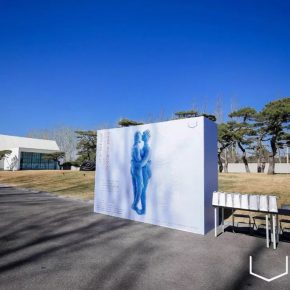
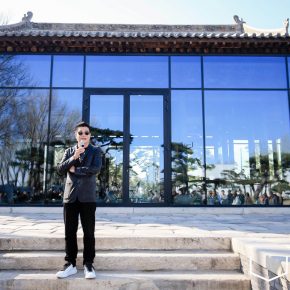
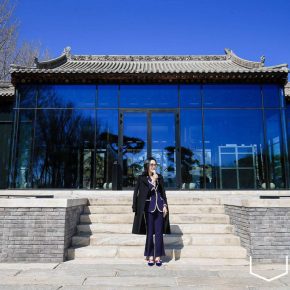
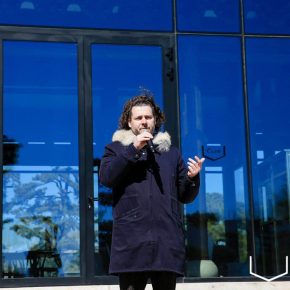
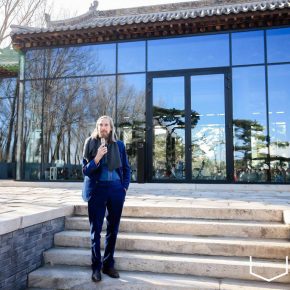
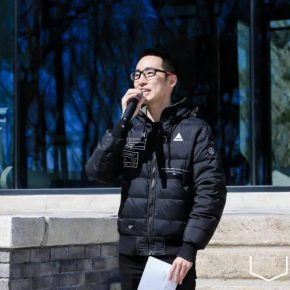
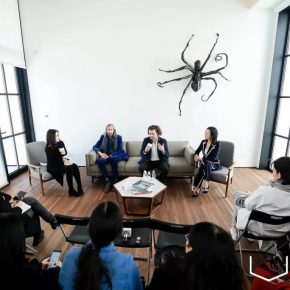
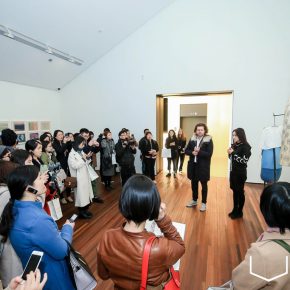
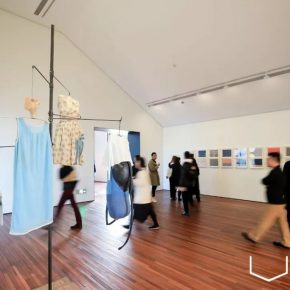
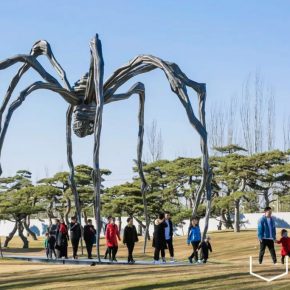


-CELL-BLACK-DAYS-路易斯-布尔乔亚-Louise-Bourgeois-290x290.jpg)








































